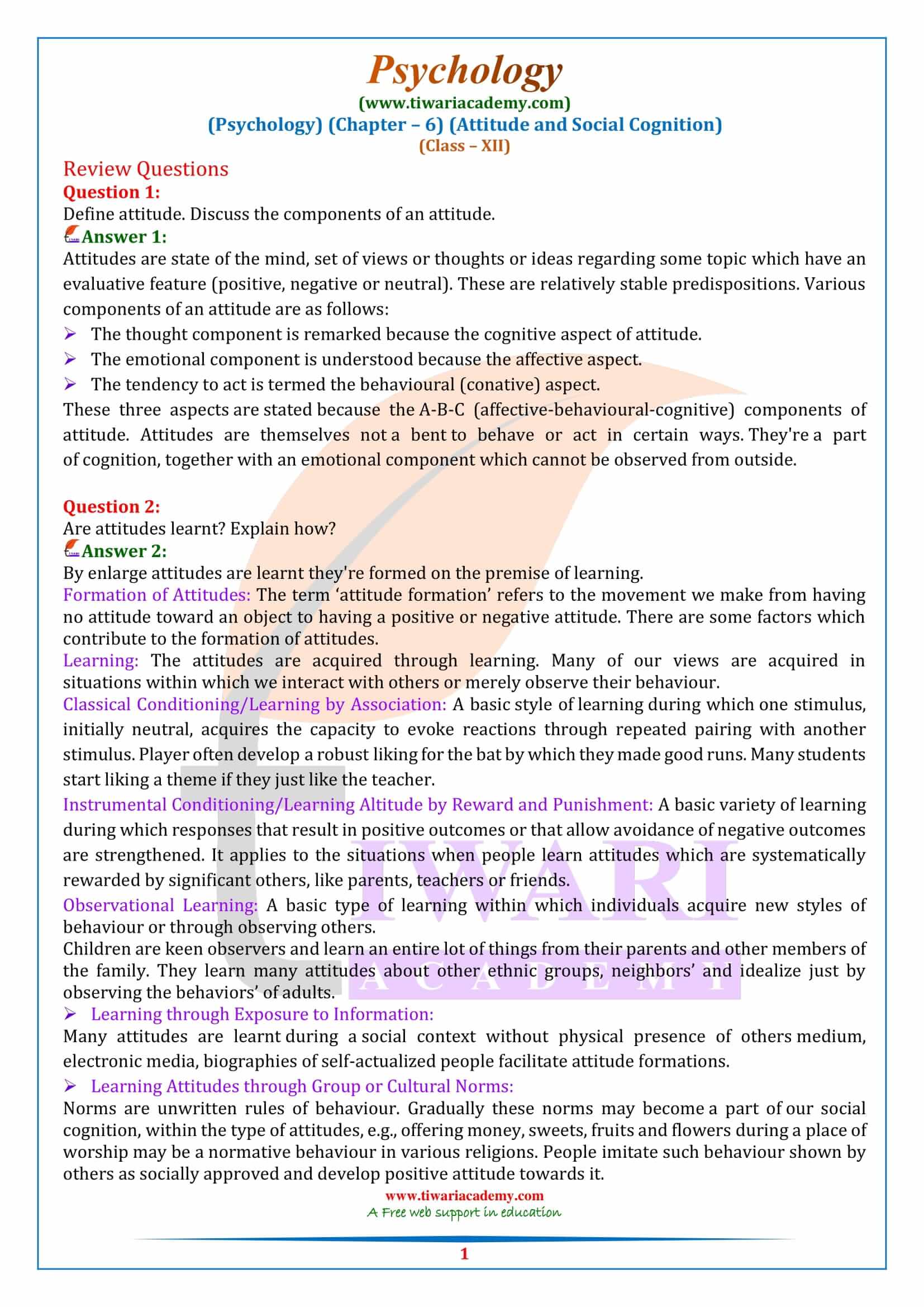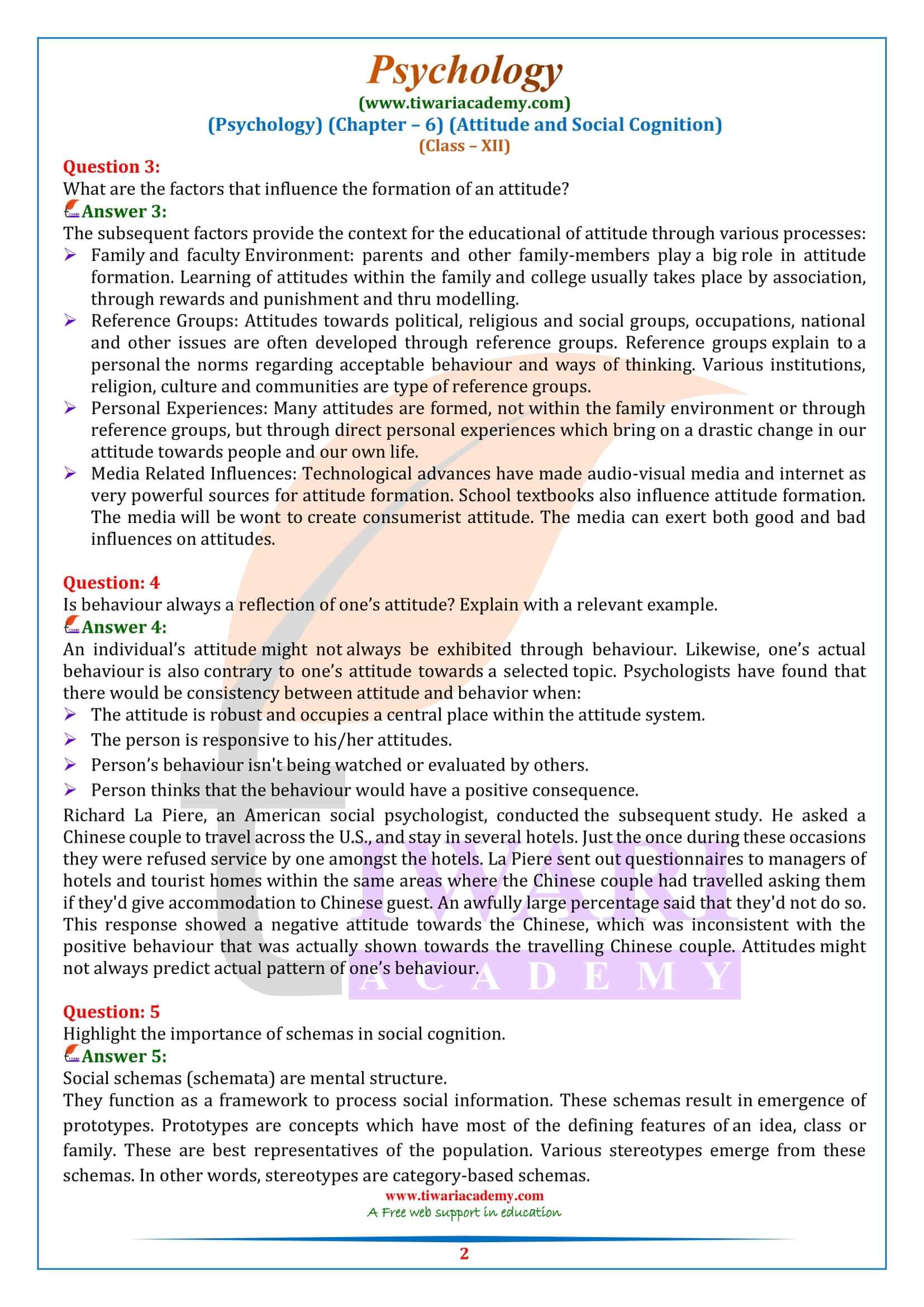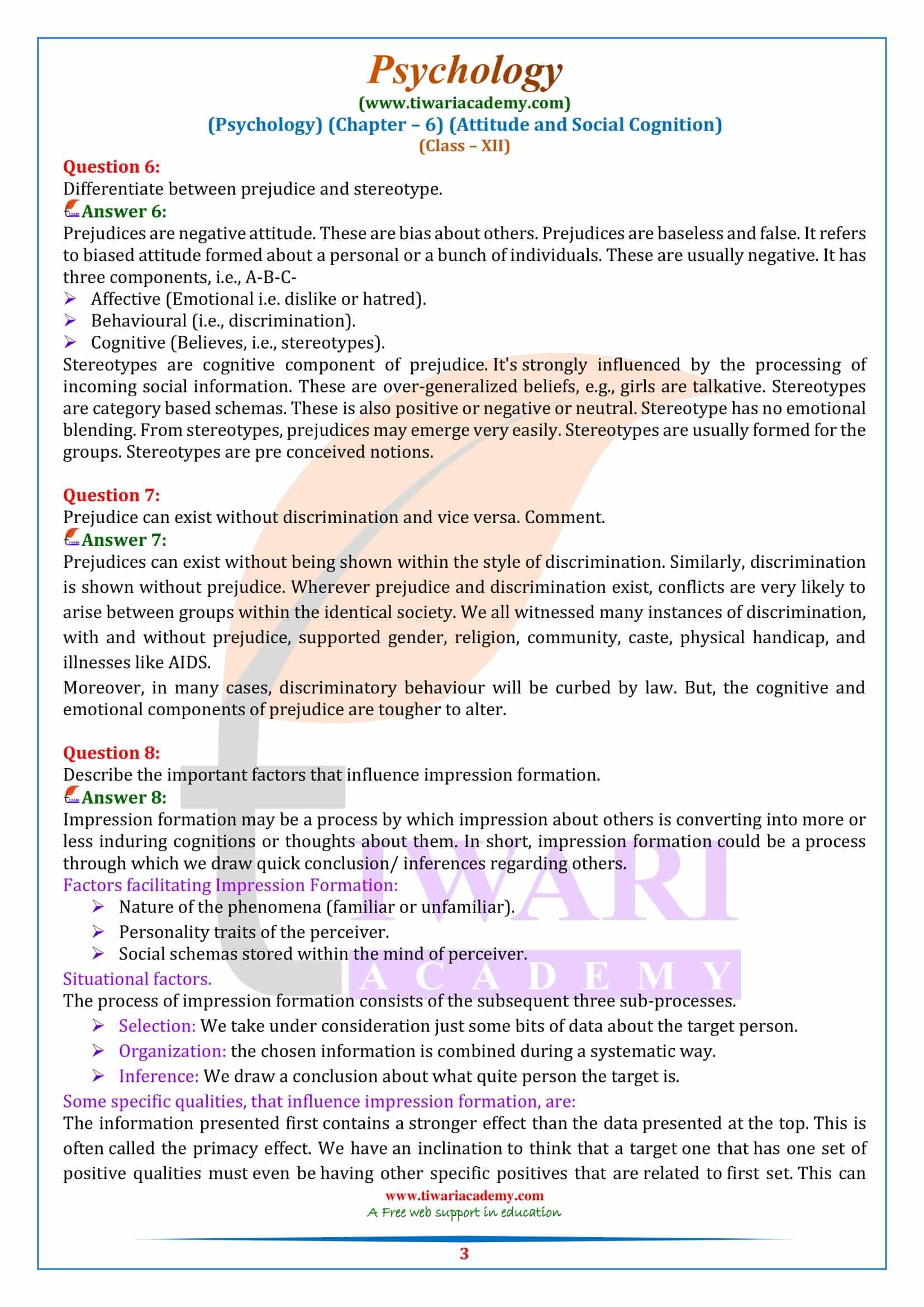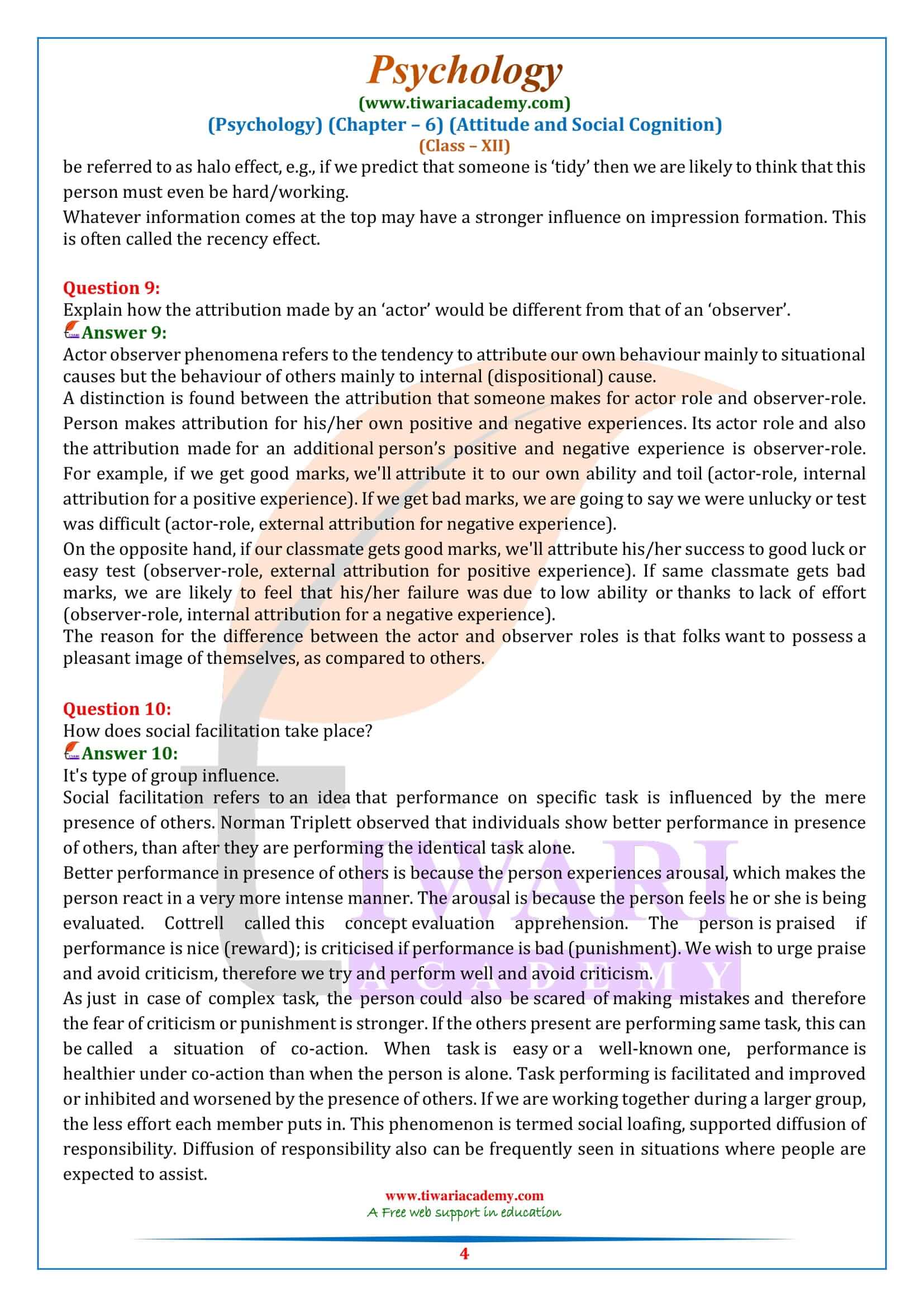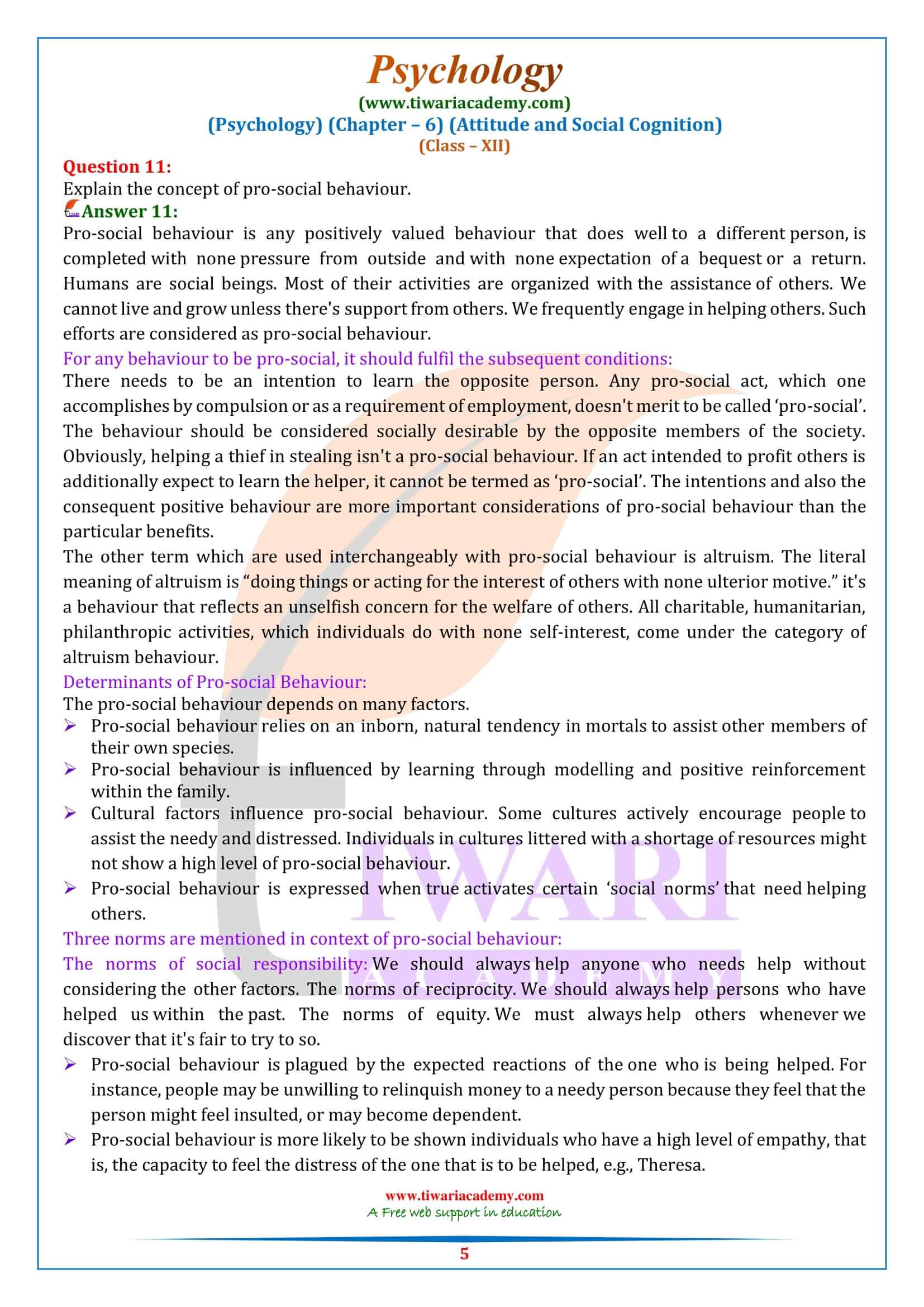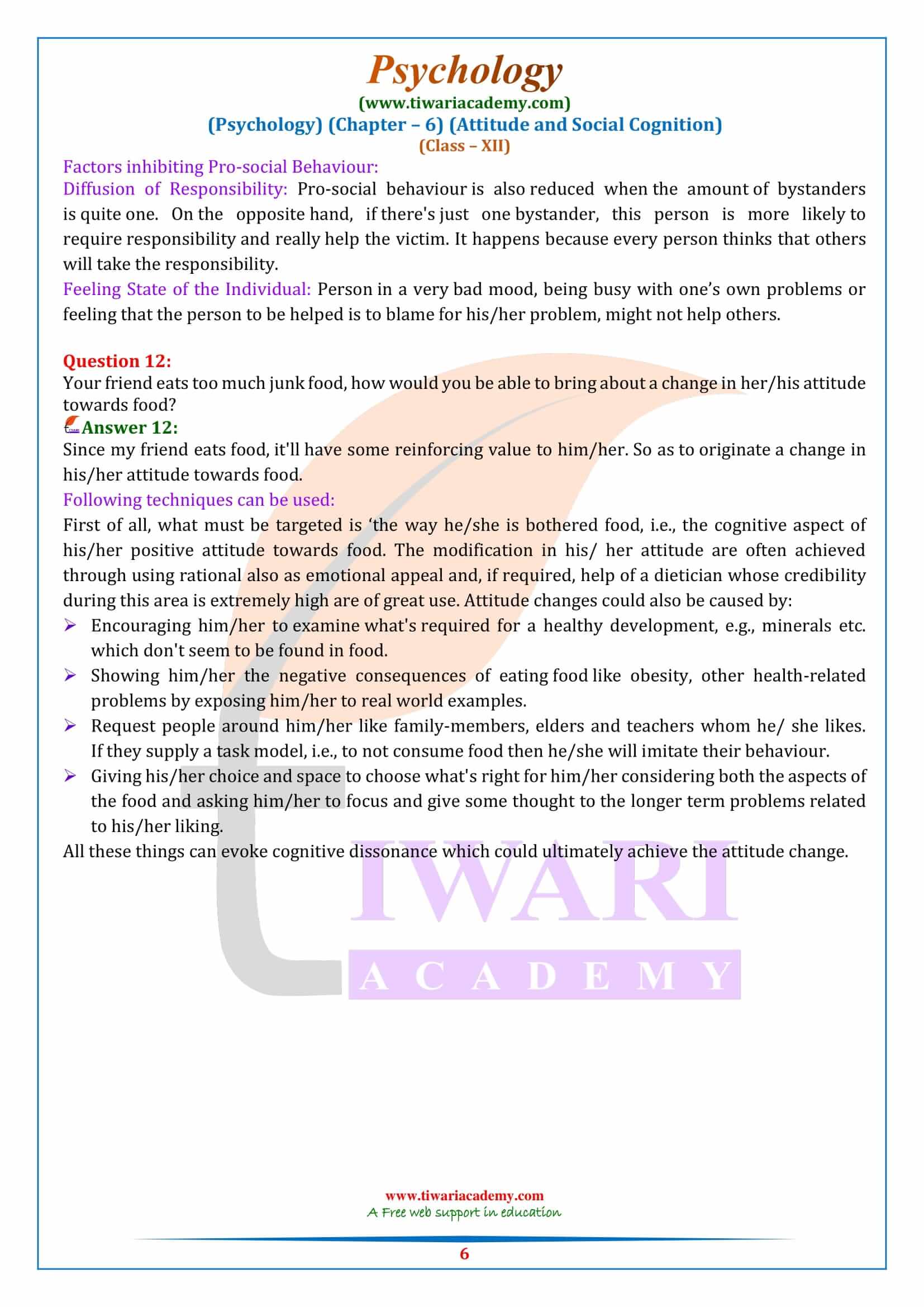NCERT Solutions for Class 12 Psychology Chapter 6 Attitude and Social Cognition with extra question answers which are important for board exams 2025-26. Students of Class 12 Psychology can revise the entire chapter 6 using the MCQ given here.
NCERT Solutions for Class 12 Psychology Chapter 6
Class 12 Psychology Chapter 6 Attitude and Social Cognition Question Answers
Define attitude. Discuss the components of an attitude.
Attitudes are state of the mind, set of views or thoughts or ideas regarding some topic which have an evaluative feature (positive, negative or neutral). These are relatively stable predispositions. Various components of an attitude are as follows:
- The thought component is remarked because the cognitive aspect of attitude.
- The emotional component is understood because the effective aspect.
- The tendency to act is termed the behavioural (conative) aspect.
These three aspects are stated because the A-B-C (affective-behavioural-cognitive) components of attitude. Attitudes are themselves not a bent to behave or act in certain ways. They’re a part of cognition, together with an emotional component which cannot be observed from outside.
What are the factors that influence the formation of an attitude?
The subsequent factors provide the context for the educational of attitude through various processes:
Family and faculty Environment: parents and other family-members play a big role in attitude formation. Learning of attitudes within the family and college usually takes place by association, through rewards and punishment and thru modelling.
Reference Groups: Attitudes towards political, religious and social groups, occupations, national and other issues are often developed through reference groups. Reference groups explain to a personal the norms regarding acceptable behaviour and ways of thinking. Various institutions, religion, culture and communities are type of reference groups.
Personal Experiences: Many attitudes are formed, not within the family environment or through reference groups, but through direct personal experiences which bring on a drastic change in our attitude towards people and our own life.
Media Related Influences: Technological advances have made audio-visual media and internet as very powerful sources for attitude formation. School textbooks also influence attitude formation. The media will be wont to create consumerist attitude. The media can exert both good and bad influences on attitudes.
Is behaviour always a reflection of one’s attitude? Explain with a relevant example.
An individual’s attitude might not always be exhibited through behaviour. Likewise, one’s actual behaviour is also contrary to one’s attitude towards a selected topic. Psychologists have found that there would be consistency between attitude and behavior when:
- The attitude is robust and occupies a central place within the attitude system.
- The person is responsive to his/her attitudes.
- Person’s behaviour isn’t being watched or evaluated by others.
- Person thinks that the behaviour would have a positive consequence.
Richard La Piere, an American social psychologist, conducted the subsequent study. He asked a Chinese couple to travel across the U.S., and stay in several hotels. Just the once during these occasions they were refused service by one amongst the hotels.
La Piere sent out questionnaires to managers of hotels and tourist homes within the same areas where the Chinese couple had travelled asking them if they’d give accommodation to Chinese guest. An awfully large percentage said that they’d not do so. This response showed a negative attitude towards the Chinese, which was inconsistent with the positive behaviour that was actually shown towards the travelling Chinese couple. Attitudes might not always predict actual pattern of one’s behaviour.
Highlight the importance of schemas in social cognition.
Social schemas (schemata) are mental structure.
They function as a framework to process social information. These schemas result in emergence of prototypes. Prototypes are concepts which have most of the defining features of an idea, class or family. These are best representatives of the population. Various stereotypes emerge from these schemas. In other words, stereotypes are category-based schemas.
Prejudice can exist without discrimination and vice versa. Comment.
Prejudices can exist without being shown within the style of discrimination. Similarly, discrimination is shown without prejudice. Wherever prejudice and discrimination exist, conflicts are very likely to arise between groups within the identical society. We all witnessed many instances of discrimination, with and without prejudice, supported gender, religion, community, caste, physical handicap, and illnesses like AIDS.
Moreover, in many cases, discriminatory behaviour will be curbed by law. But, the cognitive and emotional components of prejudice are tougher to alter.
